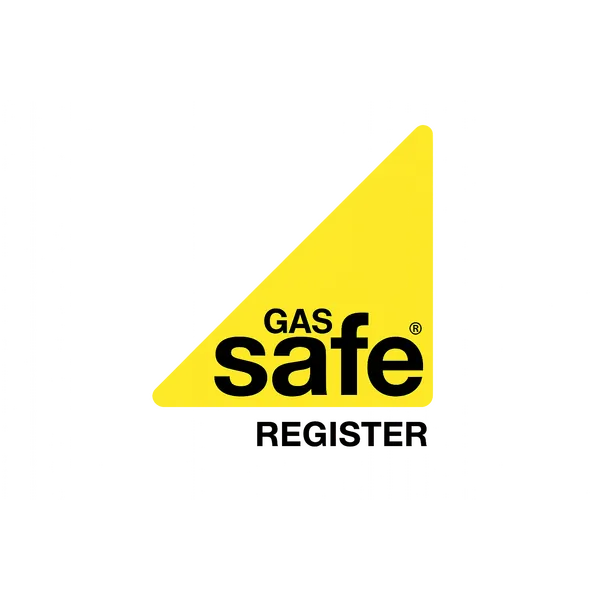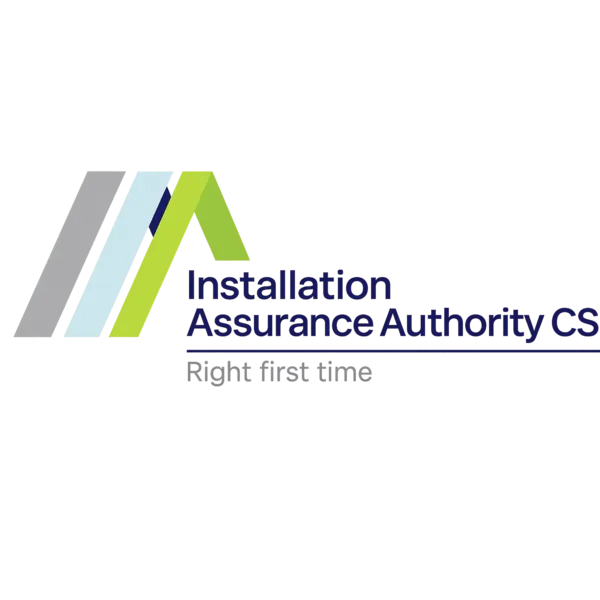UK Corporations Are Saving £50M+ Annually: The Corporate Renewable Energy Revolution Transforming Business Economics
Corporate Britain has discovered the ultimate competitive advantage: renewable energy systems that deliver 8-15% annual returns while meeting net-zero mandates and future-proofing operations in the post-Brexit energy landscape. With companies like Tesco, BT, and Unilever leading record-breaking procurement programmes totaling over 15 GW annually, corporate renewable energy has evolved from environmental initiative to business imperative. Smart executives are realising that energy independence isn't just about sustainability—it's about controlling one of their largest operational expenses while creating shareholder value.
The New Corporate Energy Paradigm
The relationship between UK corporations and energy has fundamentally shifted. What was once a simple utility expense is now a strategic asset class offering measurable returns, competitive advantages, and risk mitigation in an increasingly volatile energy market.
How UK corporations are transforming energy from cost centre to profit centre
The Numbers Driving Corporate Action
FTSE 100 Energy Procurement Statistics:
- 15+ GW of corporate renewable energy contracts signed annually
- 60+ companies with 100% renewable energy commitments
- £1.2 trillion in economic value potential from clean energy by 2030
- 15-25% reduction in operating costs for early adopters
Financial Performance Metrics:
- 8-15% annual returns on renewable energy investments
- 25-year locked-in predictable energy costs
- £2-5 million annual savings per 100,000 sq ft facility
- 3-7% increase in property values for efficient buildings
Risk Mitigation Benefits:
- Energy price volatility elimination through fixed-rate contracts
- Supply chain resilience through distributed generation
- Regulatory compliance ahead of mandatory net-zero requirements
- Reputation protection through demonstrated sustainability leadership
The Technology Stack Enabling Corporate Success
Advanced Energy Management Systems (EMS)
Modern corporate energy management goes far beyond simple monitoring, employing AI-driven optimisation that continuously maximises efficiency and minimises costs.
Core EMS Capabilities:
- Real-time analytics across all energy systems and loads
- Predictive maintenance preventing costly equipment failures
- Demand optimisation reducing peak charges by 30-50%
- Renewable integration maximising self-consumption rates
AI-Powered Optimisation:
- Machine learning algorithms adapt to facility usage patterns
- Weather prediction pre-adjusts systems for optimal performance
- Load forecasting enables proactive energy procurement
- Automated controls respond to grid conditions and pricing signals
Financial Impact:
- 15-25% reduction in total energy costs
- £500,000-2M annual savings for large facilities
- ROI of 25-40% on EMS investments
- Payback periods of 2-4 years
Enterprise Solar Solutions
Corporate solar has matured into a sophisticated financial instrument offering predictable returns and operational benefits in the UK market.
Scale and Economics:
- Multi-megawatt installations achieving optimal economies of scale
- Power Purchase Agreements (PPAs) eliminating upfront capital requirements
- 25-year contracts providing cost certainty and budget predictability
- Electricity costs locked in at 20-40% below grid rates
Technology Advantages:
- Bifacial panels delivering 15-20% additional energy generation
- Solar tracking systems increasing output by 25-35%
- Energy storage integration enabling 24/7 renewable power
- Smart inverters providing grid services and additional revenue streams
Implementation Models:
- On-site installations for maximum control and savings
- Off-site solar farms for larger-scale procurement
- Community solar for flexible, scalable participation
- Virtual power purchase agreements for renewable energy credits
Corporate Procurement Strategies
Direct Energy Procurement
On-Site Generation Benefits:
- Maximum cost savings through direct consumption
- Property value enhancement through infrastructure improvements
- Energy security reducing grid dependence
- Marketing value through visible sustainability demonstrations
Rooftop Solar Optimisation:
- Space utilisation analysis maximising generation potential
- Structural assessments ensuring safe, long-term installation
- Electrical infrastructure planning for optimal integration
- Maintenance accessibility designing for operational efficiency
Ground-Mount Systems:
- Agrivoltaics opportunities combining land use with energy generation
- Car park canopy installations providing employee benefits
- Brownfield development utilising previously unusable land
- Aesthetic integration maintaining corporate image standards
Power Purchase Agreements (PPAs)
Structure and benefits of UK corporate renewable energy PPAs
Financial Structure Advantages:
- Zero upfront capital preserving cash for core business investments
- Predictable pricing enabling accurate long-term budgeting
- Credit enhancement through high-quality counterparty agreements
- Off-balance-sheet treatment in many accounting frameworks
Contract Optimisation:
- Escalation rates below utility inflation projections
- Volume flexibility accommodating business growth or contraction
- Performance guarantees ensuring energy delivery as contracted
- End-of-term options including asset purchase or contract extension
Risk Management:
- Credit assessment of renewable energy developers
- Performance monitoring throughout contract duration
- Insurance requirements protecting against operational risks
- Termination provisions addressing various contingencies
Virtual Power Purchase Agreements (VPPAs)
Financial Hedging Benefits:
- Price certainty for renewable energy procurement
- Geographic flexibility accessing optimal renewable resources
- Scale advantages through larger project participation
- Market exposure hedging against electricity price volatility
Renewable Energy Certificate (REGO) Strategies:
- Additionality verification ensuring genuine environmental impact
- Geographic matching between generation and consumption
- Vintage management optimising REGO portfolio composition
- Compliance planning meeting regulatory and voluntary commitments
Industry-Specific Applications
Manufacturing and Industrial Facilities
High Energy Consumption Opportunities:
- 24/7 operations maximising renewable energy utilisation
- Process heat applications through renewable thermal systems
- Cogeneration potential combining heat and power generation
- Load flexibility enabling demand response participation
Technology Integration:
- Industrial battery storage for demand charge reduction
- Waste heat recovery improving overall system efficiency
- Process optimisation through smart energy management
- Equipment electrification replacing fossil fuel systems
Case Study: Automotive Manufacturing
- 35 MW solar installation across multiple facilities
- £8 million annual savings through PPA structure
- Carbon footprint reduction of 25,000 tonnes CO2 annually
- Supply chain sustainability supporting net-zero commitments
Data Centres and Technology Companies
Critical Power Requirements:
- 99.9% uptime requirements driving backup power needs
- Cooling optimisation representing 40% of total energy consumption
- Power quality protecting sensitive computing equipment
- Scalability accommodating rapid capacity growth
Advanced Solutions:
- Renewable energy firming through battery storage
- AI-optimised cooling reducing energy consumption by 30%
- Waste heat recovery for district heating or other applications
- Green hydrogen for long-duration backup power
Technology Leadership Examples:
- BT Group: 100% renewable electricity by 2025
- Vodafone: Net-zero carbon emissions by 2030
- Sky: Carbon neutral by 2030 with massive renewable procurement
Office Buildings and Commercial Real Estate
Efficiency Optimisation:
- HVAC systems accounting for 40-50% of building energy use
- Lighting retrofits reducing electricity consumption by 60-80%
- Building automation optimising systems based on occupancy
- Tenant engagement encouraging conservation behaviours
Renewable Integration:
- Building-integrated photovoltaics (BIPV) combining aesthetics with generation
- Green roof systems providing insulation and generation capacity
- Energy storage for peak shaving and backup power
- Electric vehicle charging infrastructure for employee and customer use
Portfolio Management:
- Energy benchmarking across multiple properties
- Centralised procurement leveraging portfolio scale
- Performance monitoring ensuring sustained efficiency
- Sustainability reporting meeting investor and tenant requirements
Financial Engineering and Tax Optimisation
UK Tax Incentive Maximisation
Enhanced Capital Allowances:
- 100% first-year allowances for qualifying energy-saving technologies
- Annual Investment Allowance covering renewable energy equipment
- Research and Development Credits for innovative energy solutions
- Corporation Tax Relief for green technology investments
Advanced Tax Structures:
- Capital allowances optimisation maximising tax relief
- Lease structures accessing benefits while maintaining operational control
- Group relief optimising allowances across corporate entities
- International structures for multinational corporations
Innovative Financing Models
Innovative financing models available for UK corporate renewable energy projects
Green Bonds:
- Lower interest rates for sustainability-focused projects
- Investor appeal to ESG-conscious capital
- Reporting requirements demonstrating environmental impact
- Market expansion with growing green bond issuance
Sustainable Finance Options:
- Green loans with preferential terms for renewable projects
- Sustainability-linked loans with performance-based pricing
- Asset-backed securities for portfolio financing
- Carbon credits monetising environmental benefits
Energy Service Company (ESCO) Models:
- Performance guarantees ensuring energy savings delivery
- Turnkey solutions handling project development and implementation
- Shared savings structures aligning ESCO incentives with performance
- Risk transfer protecting client from technology and performance risks
ESG Integration and Reporting
Sustainability Metrics and Reporting
Key Performance Indicators:
- Scope 1, 2, and 3 emissions tracking and reduction targets
- Renewable energy percentage of total consumption
- Energy intensity per unit of production or revenue
- Water usage and conservation metrics
Reporting Frameworks:
- CDP (Carbon Disclosure Project) for climate change reporting
- GRI (Global Reporting Initiative) for comprehensive sustainability reporting
- TCFD (Task Force on Climate-related Financial Disclosures) for climate risk disclosure
- SASB (Sustainability Accounting Standards Board) for industry-specific metrics
Third-Party Verification:
- ISO 14001 environmental management system certification
- BREEAM certification for green building recognition
- Energy Star certification for building performance
- SBTi (Science Based Targets initiative) for emissions reduction commitments
Stakeholder Engagement
Investor Relations:
- ESG performance increasingly influencing investment decisions
- Risk mitigation through environmental stewardship
- Operational efficiency demonstrating management effectiveness
- Long-term value creation through sustainable practices
Customer and Brand Value:
- Sustainability leadership differentiating in competitive markets
- Corporate responsibility building brand trust and loyalty
- Supply chain requirements meeting customer sustainability mandates
- Marketing advantages through verified environmental achievements
Employee Engagement:
- Workplace sustainability attracting and retaining talent
- Corporate culture demonstrating values alignment
- Cost savings enabling investment in employee benefits
- Innovation opportunities through sustainability initiatives
Risk Management and Business Continuity
Energy Security and Resilience
Distributed Generation Benefits:
- Grid independence during utility outages
- Microgrids providing islanding capability for critical operations
- Demand flexibility participating in grid stabilisation programmes
- Supply chain resilience reducing dependence on volatile energy markets
Emergency Preparedness:
- Backup power systems ensuring business continuity
- Communication systems maintaining connectivity during emergencies
- Critical load identification prioritising essential operations
- Recovery planning minimising downtime and restoration costs
Financial Risk Mitigation
Energy Price Hedging:
- Long-term contracts providing cost certainty
- Portfolio diversification across energy sources and suppliers
- Market exposure management through financial instruments
- Budget protection against energy price volatility
Regulatory Compliance:
- Environmental regulations anticipating future requirements
- Carbon pricing preparing for potential carbon taxes
- Building codes meeting increasing efficiency standards
- Disclosure requirements maintaining transparency and compliance
Implementation Best Practices
Project Development and Management
Strategic Planning:
- Energy audits identifying optimisation opportunities
- Technology assessments evaluating solution options
- Financial modelling comparing investment alternatives
- Timeline development coordinating with business operations
Vendor Selection:
- Contractor qualifications ensuring technical competency
- Financial stability of technology providers and developers
- Performance guarantees protecting against underdelivery
- Service capabilities for long-term maintenance and support
Project Execution:
- Construction management ensuring quality and schedule adherence
- Commissioning processes verifying system performance
- Performance monitoring throughout project lifecycle
- Continuous optimisation maximising system performance
Organisational Change Management
Stakeholder Alignment:
- Executive sponsorship ensuring strategic support
- Cross-functional teams coordinating implementation efforts
- Employee training building internal capabilities
- Communication strategies maintaining organisational buy-in
Operational Integration:
- Facilities management training for new technologies
- Maintenance protocols ensuring sustained performance
- Performance monitoring with regular reporting and optimisation
- Continuous improvement through ongoing analysis and upgrades
Future-Proofing Your Investment
Emerging Technologies and Opportunities
Advanced Energy Storage:
- Battery Energy Storage Systems (BESS) saving £100,000-500,000 annually
- Grid services providing additional revenue streams
- Backup power replacing diesel generators
- Renewable firming enabling higher self-consumption rates
Smart Grid Integration:
- Demand response participation earning £50,000-200,000 annually
- Virtual power plants aggregating distributed resources
- Frequency regulation providing valuable grid services
- Energy trading through blockchain-enabled platforms
Green Hydrogen Applications:
- Industrial process integration for steel and chemical production
- Seasonal storage for renewable energy
- Heavy-duty transportation fuel for trucks and ships
- Export opportunities for renewable energy
Conclusion: The Strategic Imperative
Corporate renewable energy has evolved from environmental initiative to business imperative, offering compelling financial returns while meeting net-zero mandates and future-proofing operations. UK companies that invest strategically in renewable energy systems are capturing multiple advantages: immediate cost savings, long-term price certainty, enhanced competitiveness, and stakeholder value creation.
The financial case is undeniable. With returns of 8-15% annually, locked-in energy costs for 25 years, and immediate operational savings, renewable energy investments often outperform traditional capital investments while serving core business functions. The scale of corporate procurement—over 15 GW annually—demonstrates that this isn't experimental technology but proven business strategy.
The risk management benefits are equally compelling. Energy price volatility, supply chain disruptions, and regulatory changes all threaten operational continuity and financial performance. Renewable energy systems provide insurance against these risks while creating competitive advantages through lower operating costs and enhanced sustainability credentials.
The technology has matured to enterprise standards. Advanced energy management systems, utility-scale solar installations, and sophisticated energy storage provide reliable, measurable performance with minimal operational complexity. Professional development, financing, and service markets ensure smooth implementation and sustained performance.
Most importantly, this represents a fundamental shift in corporate energy strategy from cost centre to value creator. Energy independence enables operational flexibility, cost predictability, and strategic positioning that traditional utility relationships cannot provide. Companies building these capabilities today are establishing competitive advantages that will compound for decades.
Ready to transform your energy strategy? Contact us to discover how corporate renewable energy solutions can deliver 8-15% annual returns while meeting your net-zero commitments.















